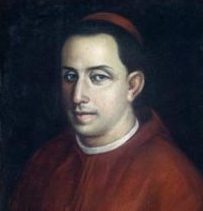Finally, at six o’clock in the morning of the fifth, the enemy’s troops left their posts in three columns. The first directed its course toward the breach ; the second toward the royal gate; and the third marched along the highway surrounding the covered way, toward the east and bordering on the plaza de armas.
The few soldiers left us occupied the gorge of the bastion of the foundry, the royal gate, the flank of the bastion of San Andres, and the curtain joining them. The enemy were supported by their batteries and by the fusileers of the tower of Santiago, who poured in a steady fire.
Consequently, it was impossible for ours to occupy the breach in order to defend the approach. The approaching columns discharged two rounds with their muskets, by which they swept the two collateral bastions, the curtain, and all the posts which could oppose them. Finally, all together, they mounted the breach, and seized the bastion of the foundry. At the same instant they attacked the royal gate, which they battered down with axes and iron levers.
After some slight opposition on our side, some officers who were there, not being able to defend those posts, the enemy fired from there on the other posts which they seized also following the cordon, and went to present themselves before the fort whither the governor and captain-general had retired.
At that moment, the militia, the regular troops, and the Indians who were in that fort, threw themselves in disorder from the top of the walls. Many threw themselves into the river, where a number of them were drowned. Consequently, when the captain-general reached the fort, he found only the castellan. Monsieur Pignon, his second, and one artilleryman. The few troops that he found were in confusion and were throwing themselves from the wall. The enemy’s column which entered by the royal gate directed its course toward the plaza de armas and seized the palace.®^ That which marched by the highway, took the small fort which defends the bridge across the Pasig River. Thence it went to the city, entering by the Parian gate/^
The fort flung a white flag, and terms of capitulation were proposed, which the British officers refused to accept At the same moment the colonel pressed the fort to surrender, else indeed hostilities would be continued and arms used. The captain-general, pressed and greatly embarrassed, resolved to go in person with the colonel, under the good faith of the guaranty of his person in order to treat concerning the capitulation with the general. In fact, they discussed the matter at length in the palace. The archbishop desired to have military honors accorded, insisting on this point several times but not being able to obtain it. He was compelled to give an order for the surrender of the fort, and all the men were made prisoners of war with the exception of the captain-general. The military were granted the honor of keeping their swords and the repeated demands of the captain-general could obtain nothing else.^**
The city was given over to pillage, which was cruel and lasted for forty hours, without excepting the churches, the archbishopric, and a part of the palace. Although the captain-general objected at the end of twenty-four hours, the pillage really continued, in spite of the orders of the British general for it to cease. He himself killed with his own hand a soldier whom he found transgressing his orders, and had three hanged.^^
In the doings of that day, the sargento-mayor of the royal regiment, two captains, two subalterns, about fifty soldiers of the regular troops, and thirty of the commerce militia were killed on our side, and many were wounded.
In the other doings, and especially in the last sortie, more than three hundred Indians were killed, and more than four hundred wounded.
The number killed on the side of the enemy we have not been able to learn exactly. It has been learned only by some circumstances, that in the review made two days after the taking of the place, the enemy had lost more than a thousand men, among whom were sixteen officers. Among those officers, was a sargento-mayor of Drapert’s regiment, who was killed on the day of the assault by an arrow; and the commandant of the regiment of Chamal, who was killed by a musket ball, as he was watching with a glass the approach from the tower of Santiago. The vice-admiral^ was drowned when coming ashore in a small boat which overturned; and the same accident caused the death of some sailors and soldiers.
The forces of the enemy consisted of fifteen hundred European soldiers, chosen from Drapert’s regiment, and from the battalion of the volunteers of Chamal; two artillery companies of sixty men apiece; three thousand European sailors, fusileers and well disciplined; eight hundred Sepoys, with muskets, forming two battalions, and fourteen hundred of the same troops destined for the fascines.
That formed an army of six thousand eight hundred and thirty men.
The two mortar batteries, which, as has been said, were of different caliber, threw more than five thousand bombs into the city.^^ The land batteries and those of the ships fired more than twenty thousand shots from twenty-four pounders, and ruined the city in many places. The enemy sent about twenty-five shells, which set fires in five different places; and if all diligence had not been employed, the city, or the greater part of it, would have been in ashes.
Manila,
December 23, 1762.
